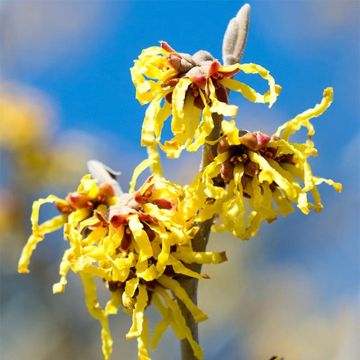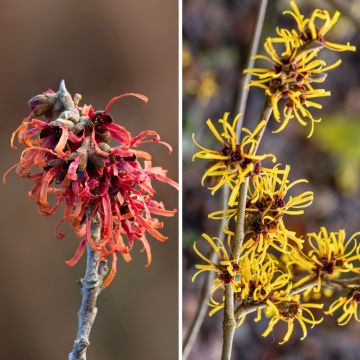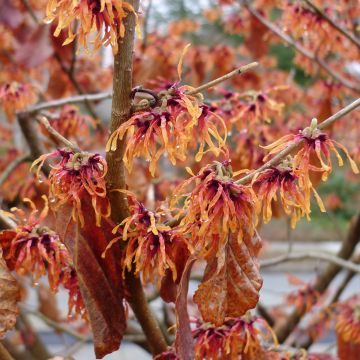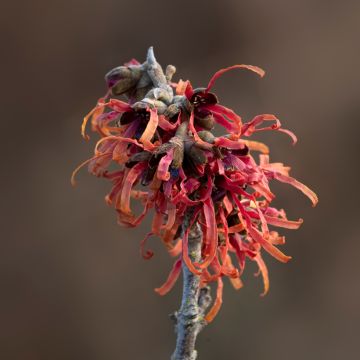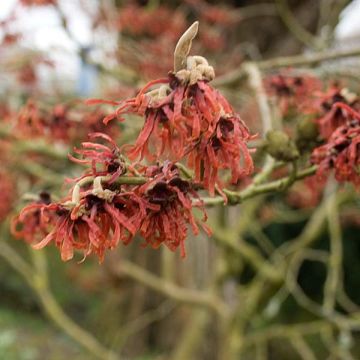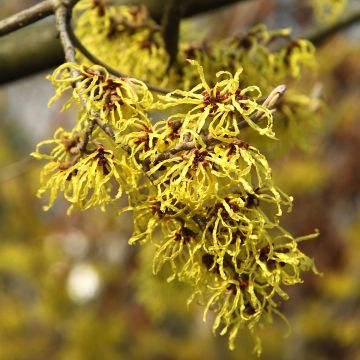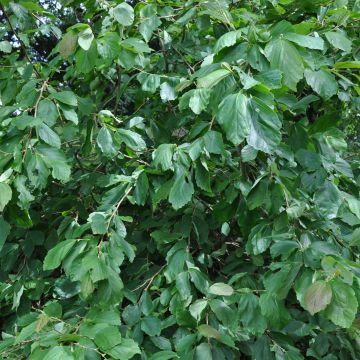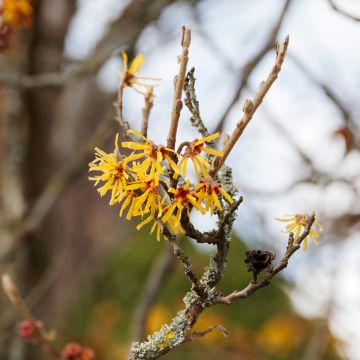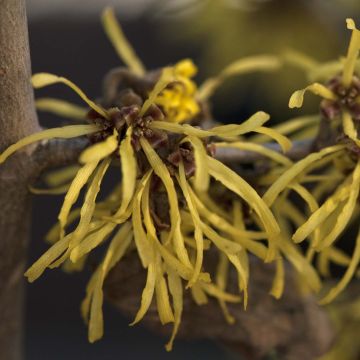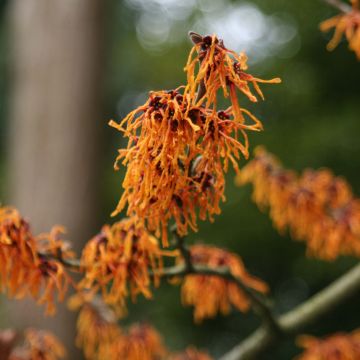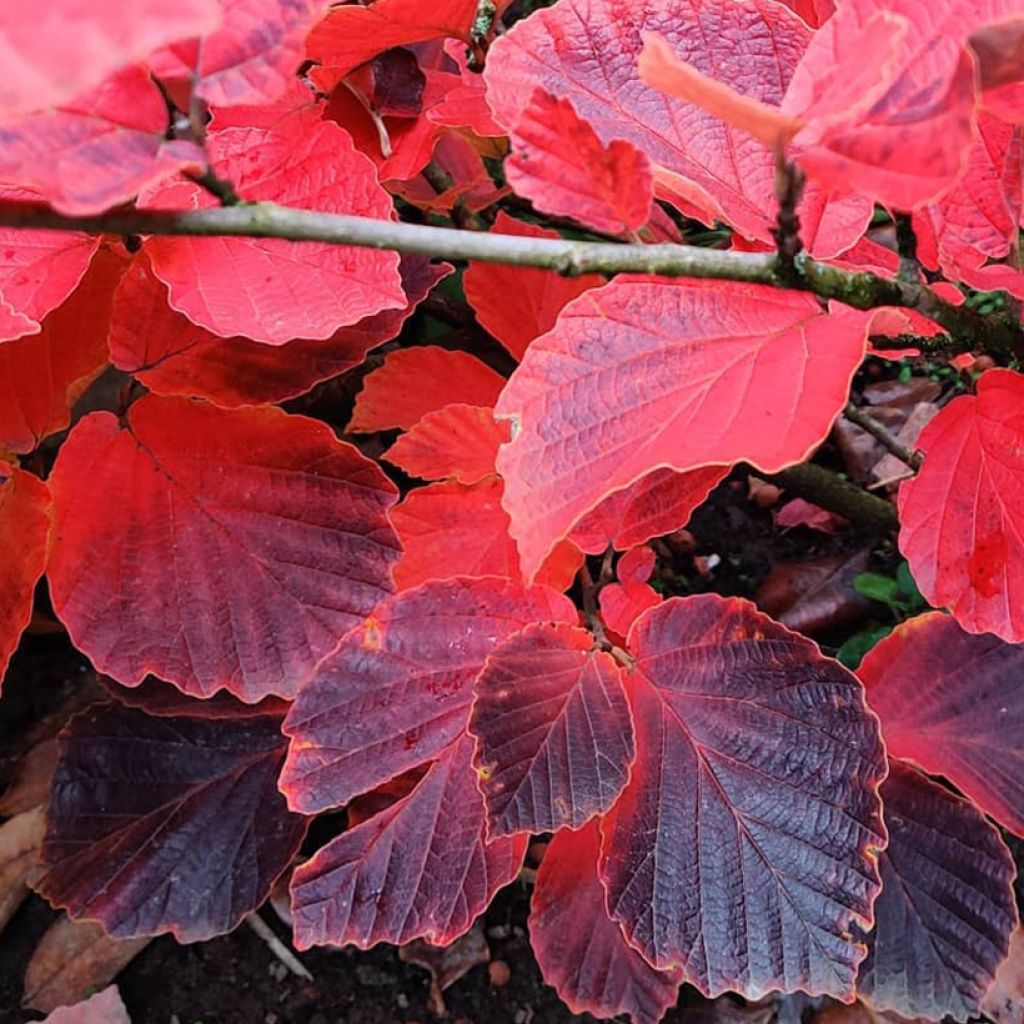

Hamamelis intermedia Yamina - Witch Hazel
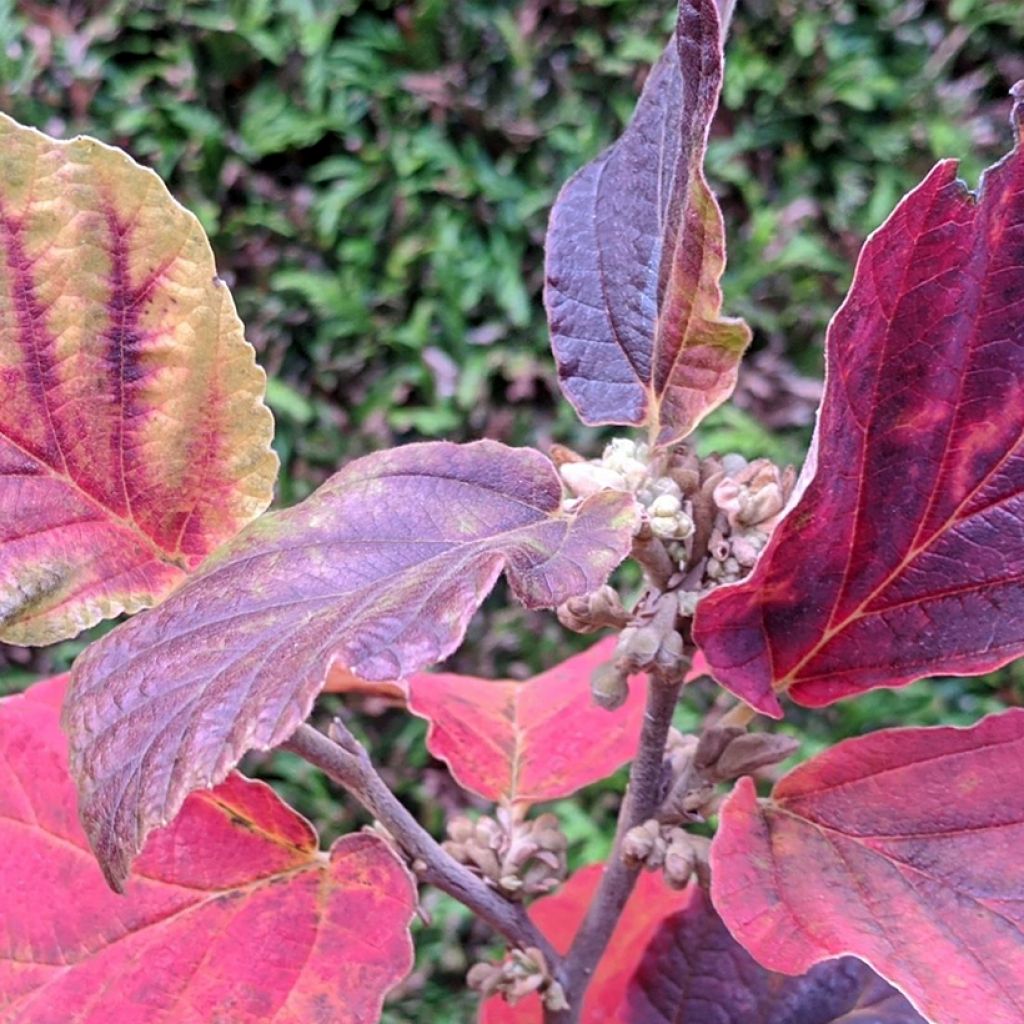

Hamamelis intermedia Yamina - Witch Hazel
Hamamelis intermedia Yamina - Witch Hazel
Hamamelis x intermedia Yamina
Witch Hazel
This item cannot be shipped to the selected country
Delivery charge from €5.90
More information
Schedule delivery date,
and select date in basket
This plant carries a 24 months recovery warranty
More information
We guarantee the quality of our plants for a full growing cycle, and will replace at our expense any plant that fails to recover under normal climatic and planting conditions.
From €5.90 for pickup delivery and €6.90 for home delivery
Express home delivery from €8.90.
Does this plant fit my garden?
Set up your Plantfit profile →
Description
The Hamamelis x intermedia 'Yamina' is a superb Witch Hazel bush whose foliage changes colour as early as September and reaches its peak in autumn. Like all hybrid witch hazels, it also offers a fragrant winter flowering. Its flowering is abundant, composed of small spider-shaped yellow flowers. Over time, it forms a beautiful spreading bush that stands out in the garden. In cool, rich, and acidic soil, it is one of the best bushes for autumn and late winter to be planted in borders or as a specimen plant.
The Hamamelis x intermedia is a hybrid resulting from the cross-breeding between the Hamamelis japonica and H. mollis, respectively native to Japan and China. These plants belong to the Hamamelidaceae family, among which we find the Loropetalum, the Liquidambars, and the Persian Ironwood, which invariably adorn themselves with fantastic autumn foliage colours.
The Hamamelis x intermedia 'Yamina' is a recent horticultural variety. It is a moderately fast-growing bush with a spreading habit. At age 10, it will reach approximately 1.60 m (5ft) in all directions. Ultimately, it can grow up to 3.50 m (11ft) in all directions under optimal conditions. This bush develops a few main branches that bear spreading secondary lateral branches, almost horizontally (slightly V-shaped). Its deciduous foliage is composed of ovate leaves, initially greenish-yellow with bronze reflections in spring, becoming green in early summer. If it receives enough sunlight, the foliage begins to color in brownish-purple and bronze in late summer. Then it turns successively violet, buttery yellow, and blood red before falling, filling the garden with warm hues. Its fragrant flowers are abundant on the bare branches between January and March, depending on the climate. They measure approximately 2 cm (1in) in length and are composed of numerous elongated and curiously wrinkled yellow petals, almost claw-like, like witch fingers. At the base of the flower, a burgundy calyx is observed. This nectariferous flowering lasts 5 to 7 weeks and then gives way to leaves. The branches of Witch Hazels are somewhat fragile, so they need to be sheltered from prevailing winds. It is also important to leave space for their shallow roots, which do not tolerate competition. Very hardy (approximately -25°C (1°F)), Witch Hazel is quite demanding: it does not tolerate limestone, poor soils, waterlogged soils in winter, or summer drought.
Plant this Hamamelis intermedia 'Yamina' in non-scorching sunlight: on the edge of a woodland, under large trees, or in the background of a border composed of Heucheras, Tiarellas, and Hostas, for example. It will also pair well with Daphnes, Mountain Laurels (Kalmia), and Rhododendrons. It will also be magnificent alongside evergreen bushes such as autumn camellias or the Chimonanthus praecox. You can also surround it with a few hellebores.
Report an error about the product description
Plant habit
Flowering
Foliage
Botanical data
Hamamelis
x intermedia
Yamina
Hamamelidaceae
Witch Hazel
Cultivar or hybrid
Other Hamamelis - Witch-hazel
Planting and care
To grow your Yamina Witch Hazel (Hamamelis intermedia 'Yamina') successfully, follow these tips:
- Plant it in autumn when it's expected to rain.
- Choose a spot with moderately sunny exposure in cooler areas, or partially shaded in hot climates. Avoid planting it where it will get too much direct sunlight or dryness, or its leaves will droop, turn yellow, and possibly fall off before autumn.
- Yamina Witch Hazel prefers non-chalky soil that is neutral to acidic.
- Plant it near your house to enjoy the winter flowering fully. Don't plant other bushes within 2m (7ft) of its base, as it doesn't like the competition.
- Dig a hole that is 60-70cm (24-28in) wide and deep. Mix the soil with heather earth and compost, or compost enriched with a root stimulator. Soak the roots in water for 20 minutes before planting.
- Ensure that the top of the root ball is level with the surface of the soil. Fill the hole with soil and water generously.
- Monitor watering during the growing season, and water whenever necessary. Adding well-rotted manure or compost around the base of the bush will be beneficial. This bush likes slightly moist soils, so there is little risk of overwatering in summer. However, in winter, let the rain do its job!
Planting period
Intended location
Care
This item has not been reviewed yet - be the first to leave a review about it.
Haven't found what you were looking for?
Hardiness is the lowest winter temperature a plant can endure without suffering serious damage or even dying. However, hardiness is affected by location (a sheltered area, such as a patio), protection (winter cover) and soil type (hardiness is improved by well-drained soil).

Photo Sharing Terms & Conditions
In order to encourage gardeners to interact and share their experiences, Promesse de fleurs offers various media enabling content to be uploaded onto its Site - in particular via the ‘Photo sharing’ module.
The User agrees to refrain from:
- Posting any content that is illegal, prejudicial, insulting, racist, inciteful to hatred, revisionist, contrary to public decency, that infringes on privacy or on the privacy rights of third parties, in particular the publicity rights of persons and goods, intellectual property rights, or the right to privacy.
- Submitting content on behalf of a third party;
- Impersonate the identity of a third party and/or publish any personal information about a third party;
In general, the User undertakes to refrain from any unethical behaviour.
All Content (in particular text, comments, files, images, photos, videos, creative works, etc.), which may be subject to property or intellectual property rights, image or other private rights, shall remain the property of the User, subject to the limited rights granted by the terms of the licence granted by Promesse de fleurs as stated below. Users are at liberty to publish or not to publish such Content on the Site, notably via the ‘Photo Sharing’ facility, and accept that this Content shall be made public and freely accessible, notably on the Internet.
Users further acknowledge, undertake to have ,and guarantee that they hold all necessary rights and permissions to publish such material on the Site, in particular with regard to the legislation in force pertaining to any privacy, property, intellectual property, image, or contractual rights, or rights of any other nature. By publishing such Content on the Site, Users acknowledge accepting full liability as publishers of the Content within the meaning of the law, and grant Promesse de fleurs, free of charge, an inclusive, worldwide licence for the said Content for the entire duration of its publication, including all reproduction, representation, up/downloading, displaying, performing, transmission, and storage rights.
Users also grant permission for their name to be linked to the Content and accept that this link may not always be made available.
By engaging in posting material, Users consent to their Content becoming automatically accessible on the Internet, in particular on other sites and/or blogs and/or web pages of the Promesse de fleurs site, including in particular social pages and the Promesse de fleurs catalogue.
Users may secure the removal of entrusted content free of charge by issuing a simple request via our contact form.
The flowering period indicated on our website applies to countries and regions located in USDA zone 8 (France, the United Kingdom, Ireland, the Netherlands, etc.)
It will vary according to where you live:
- In zones 9 to 10 (Italy, Spain, Greece, etc.), flowering will occur about 2 to 4 weeks earlier.
- In zones 6 to 7 (Germany, Poland, Slovenia, and lower mountainous regions), flowering will be delayed by 2 to 3 weeks.
- In zone 5 (Central Europe, Scandinavia), blooming will be delayed by 3 to 5 weeks.
In temperate climates, pruning of spring-flowering shrubs (forsythia, spireas, etc.) should be done just after flowering.
Pruning of summer-flowering shrubs (Indian Lilac, Perovskia, etc.) can be done in winter or spring.
In cold regions as well as with frost-sensitive plants, avoid pruning too early when severe frosts may still occur.
The planting period indicated on our website applies to countries and regions located in USDA zone 8 (France, United Kingdom, Ireland, Netherlands).
It will vary according to where you live:
- In Mediterranean zones (Marseille, Madrid, Milan, etc.), autumn and winter are the best planting periods.
- In continental zones (Strasbourg, Munich, Vienna, etc.), delay planting by 2 to 3 weeks in spring and bring it forward by 2 to 4 weeks in autumn.
- In mountainous regions (the Alps, Pyrenees, Carpathians, etc.), it is best to plant in late spring (May-June) or late summer (August-September).
The harvesting period indicated on our website applies to countries and regions in USDA zone 8 (France, England, Ireland, the Netherlands).
In colder areas (Scandinavia, Poland, Austria...) fruit and vegetable harvests are likely to be delayed by 3-4 weeks.
In warmer areas (Italy, Spain, Greece, etc.), harvesting will probably take place earlier, depending on weather conditions.
The sowing periods indicated on our website apply to countries and regions within USDA Zone 8 (France, UK, Ireland, Netherlands).
In colder areas (Scandinavia, Poland, Austria...), delay any outdoor sowing by 3-4 weeks, or sow under glass.
In warmer climes (Italy, Spain, Greece, etc.), bring outdoor sowing forward by a few weeks.

































